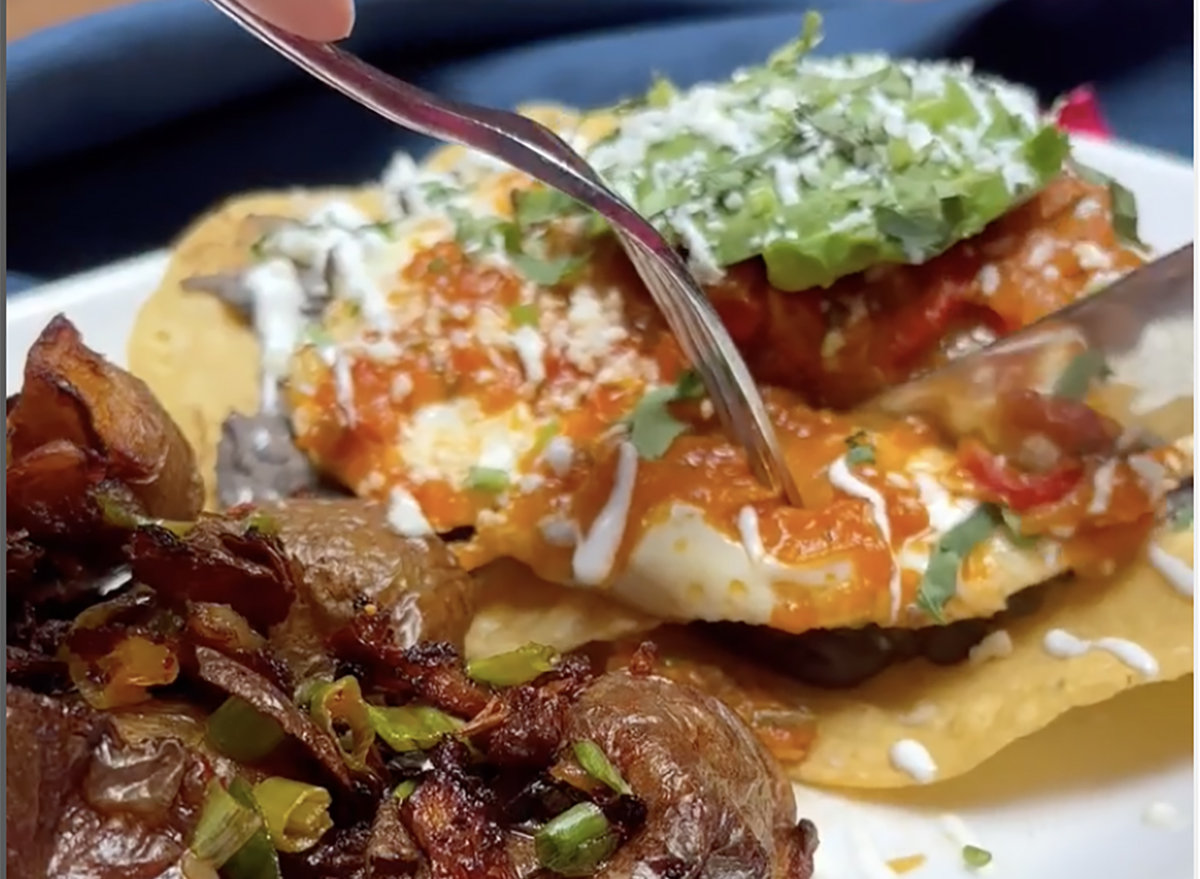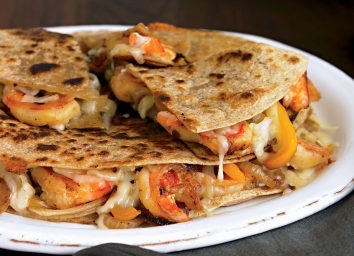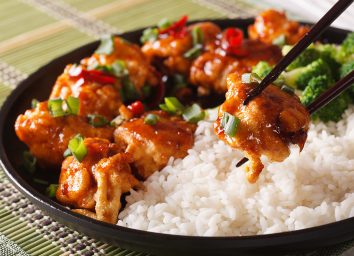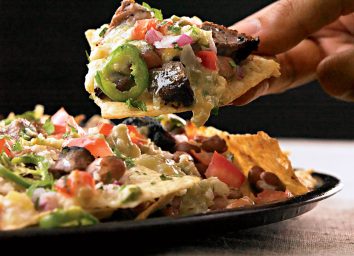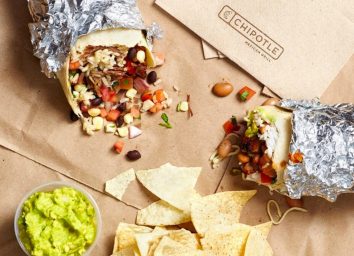Since Spain’s conquest of the Aztec Empire in the early 1500s, Mexican cuisine has referred to a fusion of Mesoamerican recipes incorporating indigenous staples like corn, beans, tomatoes, avocados, and chili peppers, with Spanish introductions—livestock, dairy products, and old-world herbs and spices. Los yanquis took what they liked about this fusion and adapted it to their own palate, adding their own ingredients.
The result? More ground beef, yellow cheese, wheat flour, and canned vegetables—ingredients that were seldom used within the borders of Mexico. Yet, it didn’t just stop there. Traditions and classic recipes traveled even further, eventually making way for Mexican-style food to be widely available in the United States. The thing is, Americans also decided to make some tweaks to staple dishes—such as the infamous California burrito and much of Tex-Mex cuisine, like puffy tacos and refried beans in almost every meal.
We’ve compiled a list of some of the most Americanized Mexican dishes that got a little bit lost in translation, and are never actually eaten in Mexico to this day. Keep reading and you may find that your local taqueria isn’t as authentic as you once thought…And for more, don’t miss 7 Hawaiian Foods No One Eats in Hawaii
Nachos
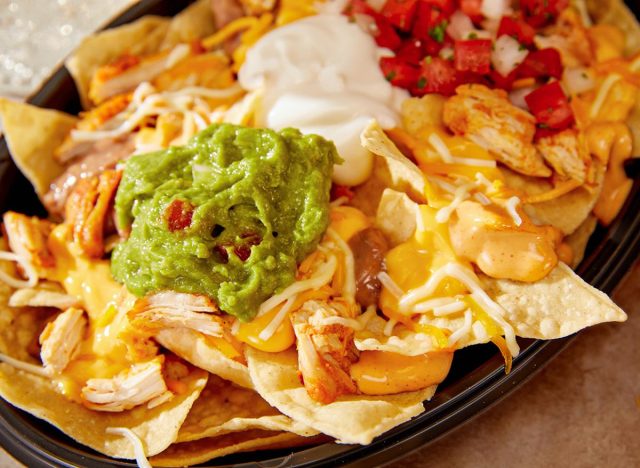
Nachos were invented in Piedras Negras, Mexico, in 1943. Does that make them authentically Mexican? Not really. This bar-food staple was offered by a restaurant’s maître-d after a group of women—the wives of U.S. soldiers stationed in nearby Fort Duncan—wanted something to eat after discovering that restaurant had already closed for the evening. All he had access to were tortillas (which he cut into triangles and fried), cheese (which he melted over the fried triangles), and pickled jalapeño peppers, which he used as a garnish. The versions you see around the world today are a far cry from this, incorporating ground beef, pulled pork, sour cream, guacamole, and an unseemly amount of yellow cheese.
For a similar but more traditional Mexican dish, try chilaquiles. Generally served at breakfast, they’re made with quartered corn tortillas, lightly fried and simmered with salsa, then topped with scrambled or fried eggs. No beef, no cream, and no cheese mean a massive cut in the calorie count, and the addition of eggs provides the fat-burning nutrient choline.
Burrito Bowls & Taco Salads
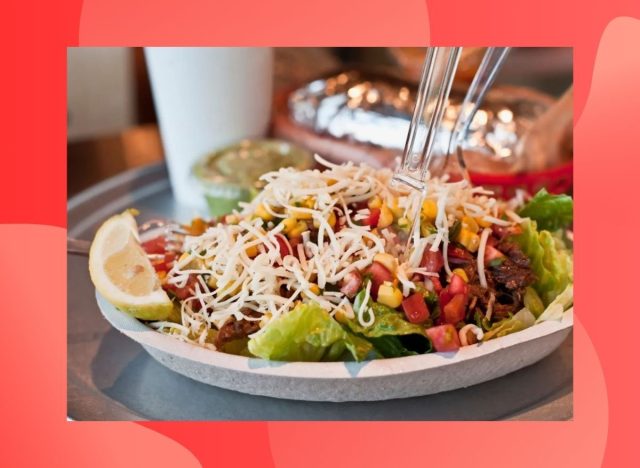
Fast-causal chains like Chipotle and El Pollo Loco have set the scene perfectly for some of the American-influenced, so-called “Mexican food” we know today. Dishes like burrito bowls and taco salads do in fact incorporate a lot of common Mexican ingredients—like rice, beans, meat, salsa, and guacamole—but they don’t steam from the homeland cuisine at all. The first sighting of the taco salad was in Dallas, Texas in the 1960s, Mexican food expert, Gustavo Arellano reports in his column for OC Weekly. The founder of Fritos, Elmer Doolin, started to serve a crunchy, edible tortilla-like shell filled with ground beef, beans, sour cream, and cheese and called it the Tacup. The creator and mastermind eventually expanded to Fritos’ restaurant at Disneyland, Casa de Fritos, where the dish blew up in popularity and ultimately shaped the delicious, customizable meal we may easily pick up regularly in the U.S. today.
If you’re looking to have a more authentic dining experience, try a plate of Mole with a side of rice and beans. Mole is originally named after the pureed sauce that the chicken component of the dish is drenched in, mole poblano, including both chocolate and chili peppers to create a sweet and spicy flavor palette. You may find that the recipe varies from restaurant to restaurant, but that goes for most Mexican food across the board.
Fajitas
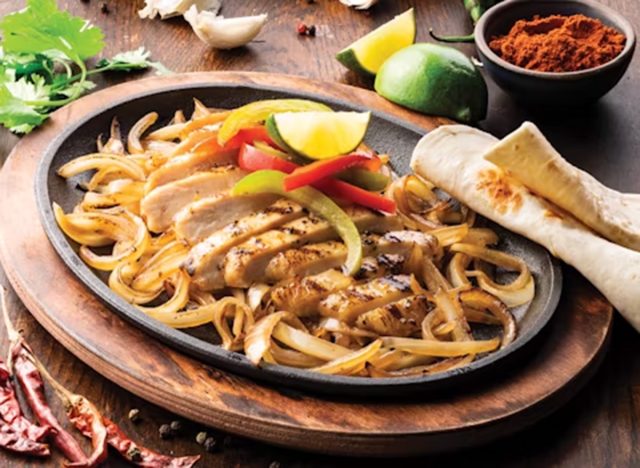
“Fajita” means “little strip.” Despite the name, fajitas are practically as American as apple pie. (Incidentally, apple pie had been eaten in Europe for hundreds of years before the Mayflower’s arrival, but that’s another story.)
Fajitas were first mentioned in print in 1971. They were inspired by the ingredients of Mexico but would have seemed foreign to most people living south of the Rio Grande. The tip-off that the dish isn’t muy auténtico is the white flour—not corn—tortillas served alongside the meat and vegetables.
Instead of eating a fajita, try cochinita pibil if you want a meaty Mexican dish. It’s a slow-roasted pork entreé that requires marinating the meat in citrus juice, coloring it with annatto seed, and roasting it while it’s wrapped in a banana leaf. As with fajitas, cochinita pibil is accompanied by corn tortillas and sides like pickled red onion, refried black beans, and habanero chiles.
Chili Con Carne
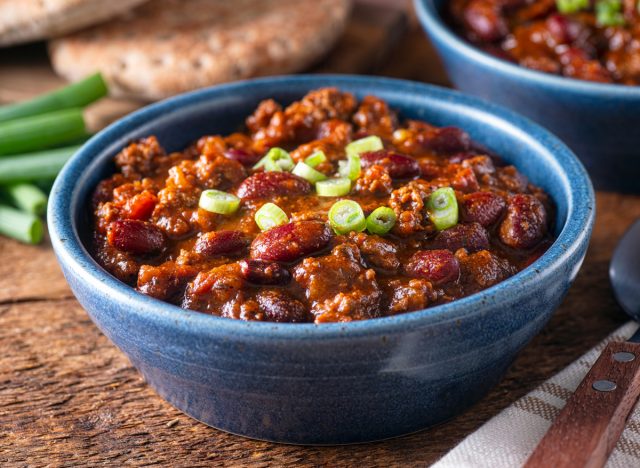
“Chili with meat” is the translation, and although you might think it’s Mexican fare, this stew of ground beef, tomatoes, beans, spices, chili peppers, sour cream, and cheese is 100% fugazi. It was created by Texan settlers. Is chili con carne really so bad? Provided that the beef is lean, grass-fed and that you don’t over-garnish it with cheese and cream, no. The version you’ll find in restaurants and diners? Yes. Is the dish authentically Mexican? Creo que no.
A more authentically Mexican meaty stew to try as an alternative is rebocado, a slow-cooked stew of pork, chilies, and peppery purslane that is enjoyed with warm tortillas.
Burritos
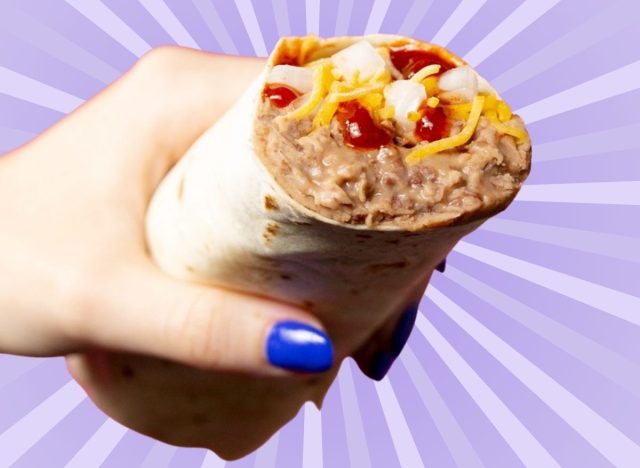
In the U.S., burritos have gotten out of control, growing to approximately the size of a newborn baby. Generally, they’re stretched to a tortilla’s limits with rice, vegetables, beans, cheese, sour cream, and, at breakfast time, eggs, sausage, and pretty much anything else you can imagine. The name means “little donkey,” and it’s generally thought that the gigantic variant we know today was invented in the U.S. by miners, cowboys, or farm workers of Mexican origin.
The burrito we’ve come to know isn’t authentically Mexican, but something similar does exist down Mexico’s way. They are called tacos de harina and hail from provinces in the south of the country. Not only are these parcels thinner and smaller than the American version, but they also typically include just two or three ingredients: a meat or seafood base, with perhaps rice, beans, white cheese, or chilies.
Queso
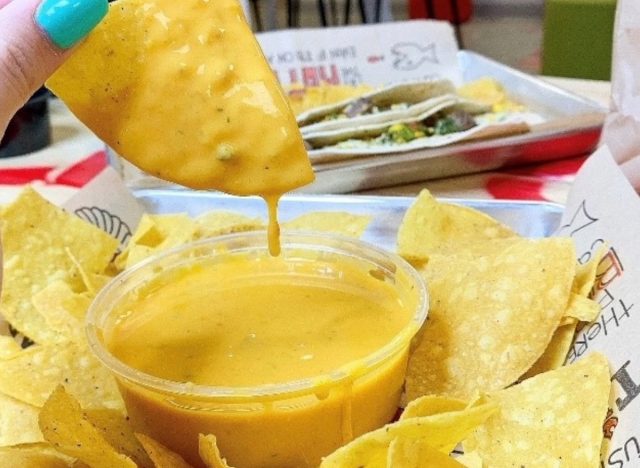
You’ll notice that Mexican food is Americanized with a generous application of molten or shredded cheese. But it’s not just the amount of cheese that gringos add to “Mexican” food that would cause lovers of authentic Mexican cuisine to say, “¿Qué diablos es eso?” It’s also the type. Cheddar cheese comes from the village of Cheddar in Somerset, England. England, you’ll recall, is some distance from Chihuahua. The mild yellow cheese loosely derived from cheddar, which is often called “queso,” couldn’t be more different from the white, nuanced, tangy cheeses of Mexico that offset the heat of the peppers.
There are several kinds of authentic Mexican white cheese, each with its own unique flavor profile. These include queso blanco, queso Oaxaca, queso panela, añejo, chihuahua, and cotija, to name but a few. They range in taste from mild to strong-flavored and aged. Queso blanco, for example, has fewer calories and far less fat and cholesterol than cheddar.
Chimichangas
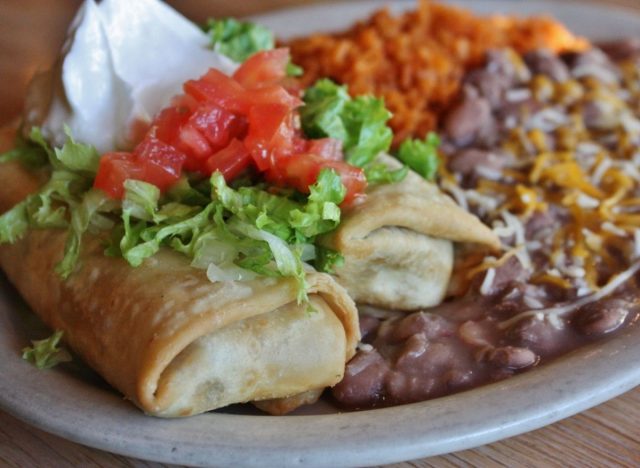
The year was 1922. The place Tucson, Arizona. Monica Flin, the owner of an eatery called El Charro, accidentally dropped a pastry into a deep-fat fryer. That was the birth of the chimichanga—unless you believe Woody Johnson, who said the chimichanga was his brainchild. In 1946, he put some burritos—which you’ll recall are not authentically Mexican in the first place—into a deep fryer at his restaurant in Phoenix.
Whichever version you choose, you’ll have no doubt noticed that Tucson and Phoenix are on the U.S. side of the border. A healthier, more authentic dish would be fish tacos with roasted tomato salsa.
A version of this story was originally published in August 2022. It has been updated to include new information.
